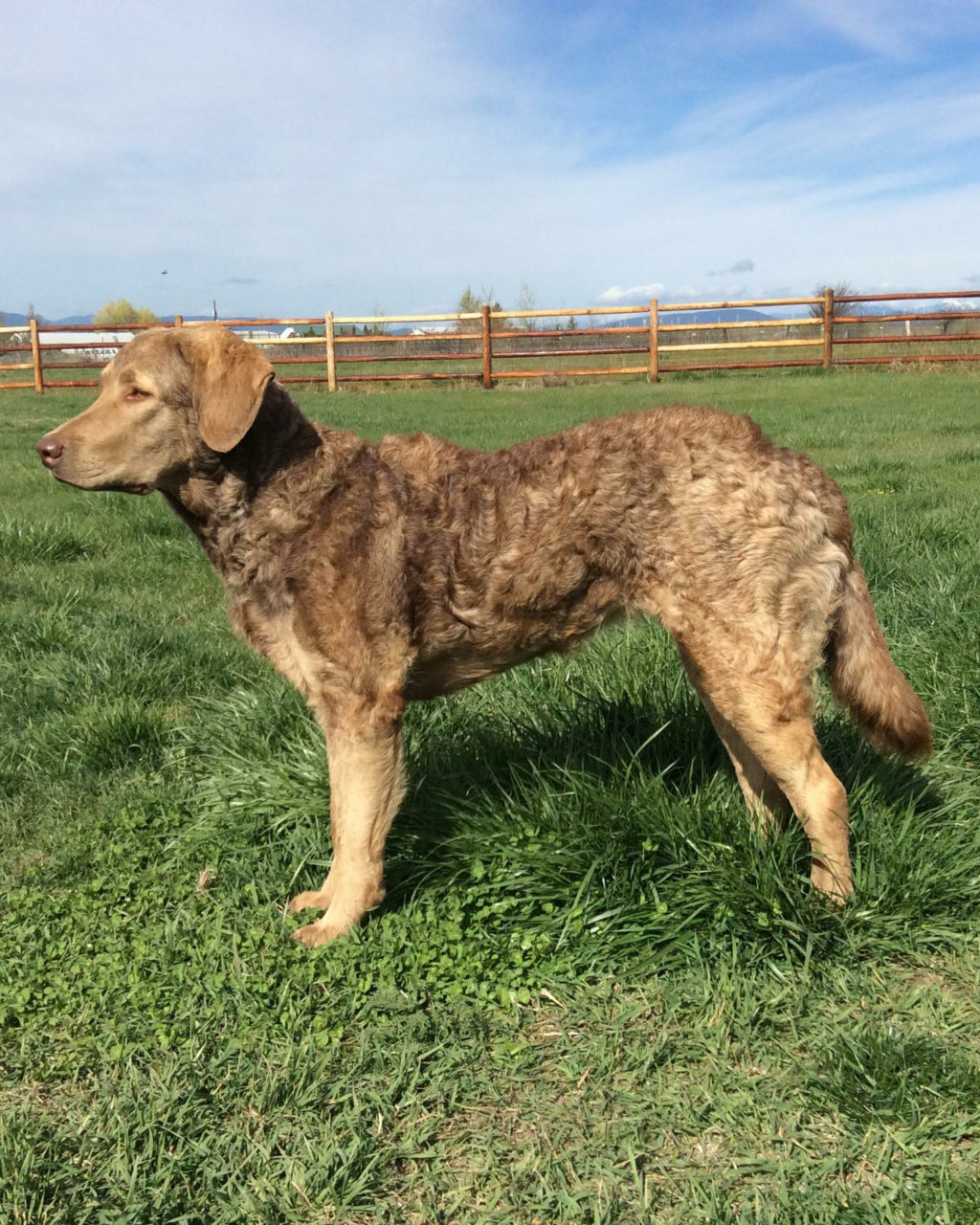You’re looking for a Chesapeake Bay Retriever. Hopefully it’s not because your neighbor has this really neat Golden Retriever and you’d like to get one of those retriever dogs too. Chessie are not like Golden or Labrador retrievers. The genetics between them are quite different. Because of this very basic genetic difference, a comparison between these breeds is not accurate. Most chessies have a bright and happy disposition. They are very intelligent dogs. They are protective dogs. Most have a love of water and tennis balls! Their disposition can vary given their life’s history (shelter life, family life, etc). They are very loyal dogs and will protect their property that includes their family.
There is much more information available if you are wanting to understand the characteristics of the chesapeake. The American Chesapeake Club is knows the chessie thoroughly. You will find that knowledge quite useful. American Chesapeake Club



















